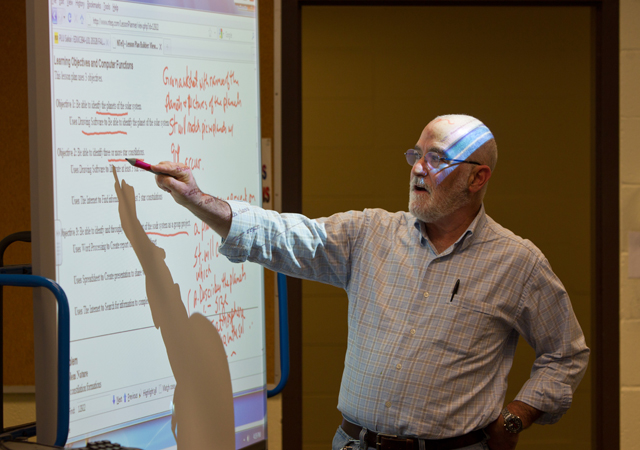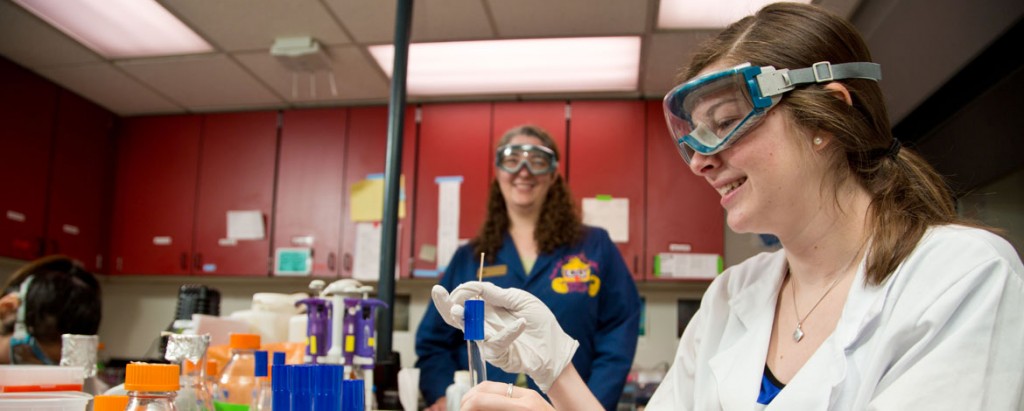Page 1 • (4,570 results in 0.036 seconds)
-
by Dana Bodewes, Instructional Designer Student note taking is usually encouraged to help students process, summarize, and synthesize new information. Some students and instructors are also exploring the idea of collaborative note taking using online tools like Google Docs and wikis. The idea seems great:…
collectively organize major themes and takeaways from the week (providing points as motivation). Or, personal notes could be used periodically to create a collective study guide, where each group member contributes to a document designed for exam preparation. Collective note taking is a great example of an active learning practice that can increase student engagement with content and peers. If you can imagine some benefits and uses for collaborative note taking, I encourage you to give it a try. For
-

Psi Chi, the International Honors Society for Psychology Psi Chi, the International Honors Society for Psychology, recently announced a Network for International Collaborative Exchange (NICE) research proposal (https://osf.io/gdske/) to study beliefs and coping responses to the COVID-19 pandemic. This proposal was authored by Dr. Corey…
Collaborative COVID-19 Research Posted by: guerreay / July 21, 2020 July 21, 2020 By Anna Leon-GuerreroDean, Division of Social SciencesPsi Chi, the International Honors Society for PsychologyPsi Chi, the International Honors Society for Psychology, recently announced a Network for International Collaborative Exchange (NICE) research proposal (https://osf.io/gdske/) to study beliefs and coping responses to the COVID-19 pandemic. This proposal was authored by Dr. Corey Cook (PLU Psychology) and
-

PLU Professor Lenny Reisberg uses a smart board during instruction for a course he teaches. (Photo by John Froschauer) Technology opens the door By Chris Albert As the snow and ice closed campus during the end of January, the challenge of getting to class was…
available in the model class – all with the goal of creating a 21st century classroom of collaboration between students and faculty. It not only provides space for student learning, but also an opportunity for faculty members to learn what they may be able to integrate in their own courses. The class is part of a pilot program endeavor funded and programmed by a partnership between the Provost’s Office, the Instructional Development and Leadership Department of the School of Education and Movement
-
The purpose and mission of PLU Music is to prepare and model for our students a lifetime of involvement in music.
of music history and repertories in both the Western art music tradition and a vernacular (non-Western) tradition. Produce public presentations, at a near-professional level, of musical performances or projects that demonstrate appropriate theoretical, historical, aesthetic and performative skills. In addition, candidates for the Bachelor of Music of Education degree demonstrate the following learning outcomes prescribed by the School of Education: The teacher candidate explains how learners grow
-
Learning Outcomes for BS and BA in Mathematics (BSM, BA) (Developed with reference to the MAA’s 2015 Curriculum Guide to Majors in the Mathematical Sciences.
Program Learning OutcomesLearning Outcomes for BS and BA in Mathematics (BSM, BA) (Developed with reference to the MAA’s 2015 Curriculum Guide to Majors in the Mathematical Sciences.) Communication: Be able to read, interpret, write about, and talk about mathematics. Computation: Develop computational, algorithmic, and technological problem-solving fluency. Disciplinary Citizenship: Develop collaborative skills, independence, perseverance, and experience with open-ended inquiry. A. Abstraction
-
The teacher PEAB meets a minimum of three times per year. The PEAB provides feedback and direction on curricular decisions, reviews program assessment data, and shares insights about the directions
Teacher PEAB The teacher PEAB meets a minimum of three times per year. The PEAB provides feedback and direction on curricular decisions, reviews program assessment data, and shares insights about the directions and needs of K12 schools. Teacher PEAB Members Emily Weston (2021-2022) Annie Wright Private School Heidi Eshpeter (2017-2022) Puyallup School District Jillian Gutierrez (2016-2022) Tacoma School District Kristi King (2021-2022) Tacoma School District Mary Jo Larsen Pacific Lutheran
-
Originally Published in 2014 If you read the acknowledgements of the books that I’ve written, you will notice that I always thank some group of students for their help and insights. With The Task of Utopia , I thanked a particular class of students who…
Being a Scholar-Teacher and a Teacher-Scholar Posted by: alex.reed / May 4, 2022 May 4, 2022 By Erin McKennaOriginally Published in 2014If you read the acknowledgements of the books that I’ve written, you will notice that I always thank some group of students for their help and insights. With The Task of Utopia, I thanked a particular class of students who were taking social and political philosophy with me as I made the final revisions on that book. While I did not teach the book itself, we
-

TACOMA, WASH. (April 3, 2017)- Pacific Lutheran University is aiming to increase visibility of student-faculty research across campus with its first Undergraduate Research Symposium on April 8. Previously, an annual reception in May showcased endowed projects. The change in format highlights a broader spectrum of…
Symposium uplifts collaborative student-faculty research Posted by: Kari Plog / April 3, 2017 Image: Mackenzie Deane and Associate Professor of Chemistry Tina Saxowsky work in a biology lab at PLU. (Photo/John Froschauer) April 3, 2017 By Brooke Thames '18PLU Marketing & CommunicationsTACOMA, WASH. (April 3, 2017)- Pacific Lutheran University is aiming to increase visibility of student-faculty research across campus with its first Undergraduate Research Symposium on April 8. Previously, an
-
Total semester credits: MAE with Elementary Teacher Certification: 38 MAE with Secondary Teacher Certification: 36 PLU’s MAE with Residency Certification program is a full-time program.
Program Schedule - Residency Teacher CertificationTotal semester credits: MAE with Elementary Teacher Certification: 38 MAE with Secondary Teacher Certification: 36 PLU’s MAE with Residency Certification program is a full-time program. Students can expect to be at their practicum sites and in classes from morning until late afternoon, or early evening. This schedule varies each term and the time commitment will vary from day to day. Students should refer to the class schedule to see specific
-
What are faculty learning communities (FLCs)? Faculty Learning Communities (FLCs) are collaborative groups of educators who come together to enhance their teaching practices and foster professional
Faculty Learning Communities What are faculty learning communities (FLCs)? Faculty Learning Communities (FLCs) are collaborative groups of educators who come together to enhance their teaching practices and foster professional growth. In these vibrant communities, members engage in shared inquiry, explore innovative pedagogical strategies, and support one another in their quest for excellence. By focusing on common interests and goals, FLCs create a space for meaningful dialogue and collective
Do you have any feedback for us? If so, feel free to use our Feedback Form.


